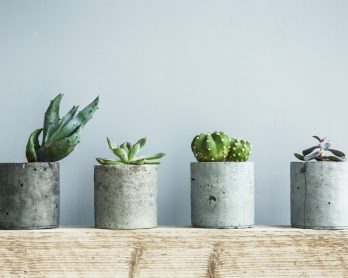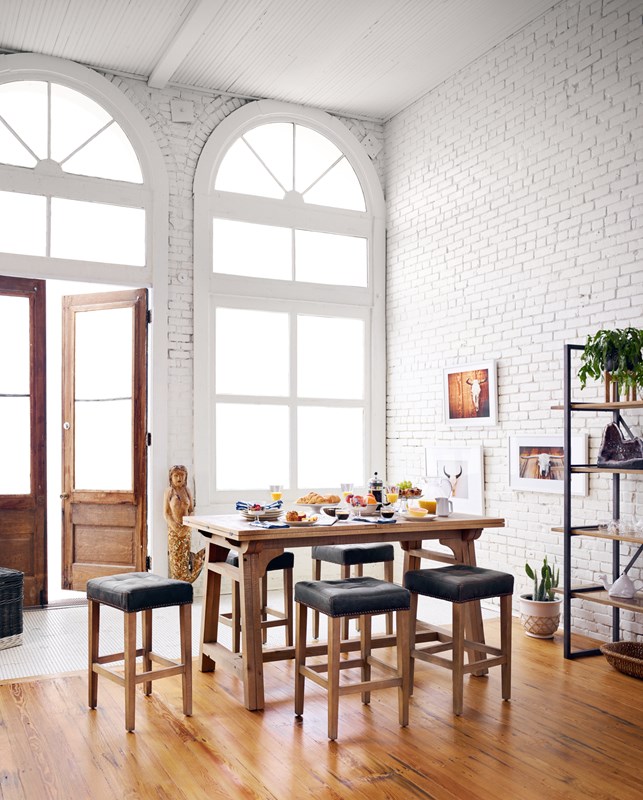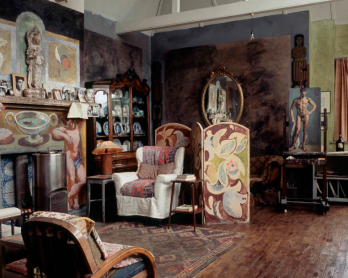4 Ways to Define and Identify Danish Modern Furniture

The question is simple, the answer surprisingly difficult: How do you identify authentic Danish modern furniture? However, we need a quick orientation before we start discussing methods. Let’s first establish motive. Why collect furniture that’s scarcely 100 years old? Well, in many of today’s homes, furniture is more than “just furniture.” Instead, furniture is regarded as art. And just like the best art, modern furniture has the power to showcase a particular time, place, and culture, allowing an appreciating person (such as a collector) to express their style and appreciation for fine craftsmanship. For many homes and businesses worldwide, Danish modern furniture continues to be one of the most popular interior design furnishing trends in existence. And it’s easy to see why!
Crafted in the old-world style, these designs transform tradition through the lens of minimalism, featuring organic curves in fine quality wood. These designs first rose to popularity in the early 20th-century due to its emphasis on clean lines, the use of extremely high-quality materials, and their proportional construction, making them a perfect fit for the human body. Kaare Klint if often cited as the originator of Danish modern furniture. But the style was built on by other designers, advancing what Klint started. Traditional designers including Hans Wegner, Arne Jacobsen, and Finn Juhl, contributed more than their fair share. In fact, all of them now considered essential to collections marketed as “mid-century modernism” – which, by the way, is a retroactively applied term.
Originally, these pieces became popular in the U.S. thanks to the need for furniture following the post-war housing boom. However, it’s popularity did not end there. Both high-end and affordable, these stylish furniture designs continue to find their way into homes. In fact, in Denmark alone more than 15,000 people in 400 companies work to produce this furniture for sale worldwide – showing how the traditions of Danish modern furniture have continued to develop, as well as inspire, over the decades.
Now that we are oriented and we know what we are talking about when we say Danish modern furniture, let’s discuss how to identify the pieces in question. Our first piece of advice you’ve already accomplished. Start with the above description. If you’re looking for authentic Danish modern furniture, familiarize yourself with the style. Discover the different designs, the names of the designers, the various manufacturers, and the general look. Then, once you have a piece in front of you that you need to identify, look for these other four factors.
Materials
When it comes to historic Danish modernism, a great emphasis was placed on the materials used. The various types of wood were the most important element when creating the various chairs, tables, desks, and other pieces. Oak and beech were very popular choices for many designers such as Wegner, Mogensen, Koch, and Panton. Another popular timber was teak. Not everything was made of wood, though. Frosted glass became popular with designers involved in creating lamps and other lighting. This was evident in the works of Poul Henningsen, best known for his three-shade lamp known as the PH lamp.
When identifying, check out the joinery first. Exposed nails or obvious glue is a sign that the piece is not authentic. Handiwork that looks well executed however can be an indicator of a piece from the era. Also, you don’t have to be an export on woods and grains to figure out if furniture is solid wood. Take a close inspection. If you don’t see any laminate (also known as plywood), visible as a line or grain change beneath any veneer, then you could have a solid wood piece. Another thing to consider – solid wood is heavy! Although it might be an excellent copy, a solid wood, well-manufactured piece of furniture is worth your time anyway – in most cases at least. Of course, there is plenty of plywood used in Danish modern pieces. But as a collector, you’ll want to know if the piece is solid wood or not.
Design and Shape
Danish modern furniture put careful thought into the design and shape of furniture as they relate to the body. Clean, pure lines designed for human proportions created pieces that were extremely comfortable. For example, the Camelback sofa of designer Carl Melmsten possesses not only waxed linen and beech legs, but also multiple curves along the back and sides. And in addition to dark woods and plywood, plastic was also used extensively by some designers, most notably Verner Panton, whose 1960’s-oriented themes could always be found in numerous chairs. As for shapes, it ran the gamut from traditional, clearly-defined chairs and cabinets with pure lines to sofas and tables with multiple curves and shapes. There is a vast difference that can be found among individual designers.
Use this resource to discover the different designs of the era, making it easier to identify if the piece of furniture you are looking at is original.
Innovation and Danish Modern
Innovative design and manufacturing techniques combined with traditional craftsmanship to create numerous original designs. In fact, Danish modernism is known for unusual shapes, often adorned with fanciful names. Among the popular were Klint’s Propeller Stool and Jacobsen’s Egg Chair and Swan Chair, now considered to be design icons internationally. In fact, Jacobsen used his training in architecture to design his chairs, which many believe has led to their practicality and style. Of course, no discussion of the traditions of Danish modern design would be complete without mentioning the three-legged Ant Chair of Jacobsen. With its one-piece plywood back and seat, it sold millions worldwide due not just to its innovative design, but also its simplicity and ability to be used in a multitude of settings.
The above information can help when identifying authentic furniture. Innovative forms sometimes mean auxiliary embellishments. Finding pieces with strange forms might be an indicator of the real deal. If a manufacturer is looking to recreate an original piece on the cheap, they might do away with cosmetic adornments or streamline designs by eliminating seemingly unnecessary features as a fifth leg.
Colors
Designers of Swedish and Norwegian furniture loved vibrant colors; they felt it made their furniture unique. Not true for Danish designers. They preferred furniture that had few if any color eccentricities or upholstery embellishments. Danish furniture was often darker than many of its counterparts. People embraced its quality of enhancing living spaces, making them look and feel more luxurious. For example, darker woods such as mahogany were often used with chairs, tables, and cabinets. Likewise, dark materials such as ostrich leather were the choice of most designers, most notably Kaare Klint. In fact, his famous Barcelona Chair, with its wide, curved seat and square, narrow back, is a perfect example.
What’s this mean in terms of identification? If you have a piece that looks like Danish modern furniture, but is exceptionally “loud” or ostentatious in its presentation, than it might not be authentic. There are a lot of new styles that have emerged since the style was first introduced. The popularity of this furniture waned during the 1970’s and 1980’s, and new ideas flourished. Since then, it has been rediscovered by an entirely new generation in recent years. But there is a whole new spin on the original ideas. Increasingly, there are alternatives of the original designs available. Many of them are worthwhile in their own right. But for those seeking the originals, keep the above in mind. Much like fine wine, Danish modernism continues to only get better with age.











I have a vintage Danish teak table that has four different positions, the top is hinged and can be turned 90 degrees to make it twice the size. In addition, it can be raised and used as a dining table. I want to identify it and establish a value.. any ideas on who may be able to do that?